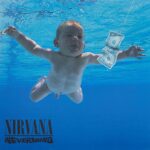O P I N I O N
BOOMER LIFE
by Annette Kurman

I hope I’m not the only one who has done this (more than once). You’re coming out from someplace (a store, the gym) to a lot where you parked your black/dark gray SUV. You don’t recall exactly where you parked (whatever happened to those posted letters that showed which row you parked on?) But onward you go to your car, grab the door handle, and realize it’s not your car.
Argh! Besides feeling foolish at trying to enter the wrong car (and theirs is so much messier than yours, of course), you take a look around and it seems that 75% of the parked cars are SUVs similar to yours in color. At night and even during the day, for me, finding my very dark gray/black Honda CRV sometimes seems like a game of “Where’s Waldo?”
I don’t have an antenna that sticks up from the roof to which I could stick a tennis ball (the older models have those antennas). I have a lonely, very faded doggie day car magnet on the left rear of my car, the only way I can identify it from behind. Oh, and I know the last four digits of my license plate number. (Okay, wise guy, do you know your license plate number if it’s not a vanity plate?)
I know I could go into my phone app to note exactly where I am when I park my car, but my mind is usually on other things, like where is the closest entrance for my item return.
And yes, I could press the horn button on my car’s key fob (which I have done in extreme situations), but how embarrassing is that? I still have to wander the aisles to track down noise from where my car horn is blaring.
When did Detroit, Mexico, Japan, Canada, South Korea, and Germany decide the vast majority of the public needs only a gray-scale choice of colors for its transportation? Black/Gray, White, Silver.
My mother, bless her, had a small orange car she drove in her 70s and 80s. The reason? So she could easily spot it in the mall parking lots! It was a gosh-awful color, but dang, you could find it anywhere in a crowded parking lot.
So are there any changes to our black and white car world this year? That would be “no.” According to bumper.com, this year’s most popular color is (drum roll)…white, accounting for 28 percent of new cars. Not only do studies show that white vehicles are involved in fewer accidents, in a vehicle’s visibility-related safety, there are few white objects on the road, which makes white cars tops as the safest car choice you can make. According to an Australian study, white cars were 12 percent less likely to get into an accident than other, darker colors.
That’s right, the most popular car color in the world is… a complete and utter lack of color. White. Boring, bland, unassuming white. Thirty-five percent of cars worldwide are white, with 28 percent following that trend in North America.
Some of this can be ascribed to the frequency of white among fleet and work vehicles, but plenty of individuals still decide to buy white even given other choices.
There are a few reasons why white does make sense; it’s easy to see against the road, it keeps the interior of the car cooler, and it is easier to keep clean than darker colors (Who knew?).
Next, rolling in second is…gray, claiming a staggering 24 percent of vehicles, and signifying a widely-accepted color choice among buyers. In recent years, gray has become synonymous with advanced technology, thanks in part to everyday devices like smart phones and laptops. It’s also a great color to hide minor dings and scratches, and it camouflages dirt so well you may be able to save money at the car wash.
Gray, however, can be considered a dangerous color for cars due to its neutrality and anonymity on the road. Silver cars and gray cars blend in with their surroundings. Compared to other colors, silver and gray cars are around ten percent more likely to get into an accident.
And of course, rounding out the top three car colors is black, accounting for 21 percent of the number of vehicles on the market. Although one of the most popular car colors out there, it is also on the list of the car colors to avoid.
Black cars heat up in the sun more than almost any other color, which can burden on your coolant system and A/C. It is also a hard color to keep clean and doesn’t hide dirt, damage, or scratches at all; even small scuffs will show on most black paint.
In general, the darker your car is, the more dangerous it is going to be. According to the Monash University Accident Research Centre’s (MUARC) Australian study, black vehicles had higher accident rates than other lighter-colored cars; they are more difficult to see in low-light and poor weather conditions. And, ironically, black cars can be even less visible in good light as they tend to blend in with the road and the surroundings.
So why is black popular? Well, it just looks cool. There’s a reason why almost every woman has a little black dress in her closet — nearly everyone looks good in black, and the same applies to cars. Even the most boring sedan looks sharp when encased in shiny black.
Silver cars hold a steady place in the market, with an eight percent market share. Silver remains a favorite for its resistance to showing dirt and its neutrality. Like white and gray, silver is a popular choice for its ability to hide minor damage and dirt. Similar to how we mentioned that white cars reflect light, silver cars also reflect light to make the interior cool.
But what about the Boomers who go out and buy that red convertible, don cool aviator glasses and ride with the wind with their hair (or lack of) blowing in the wind?
Although red is an incredibly visible and bold color, it doesn’t mean it is safe. Red cars stand out from the crowd, which is not always a good thing. Studies have shown drivers are more aggressive around red cars and they tend to induce issues with other vehicles. Plus, and this is only anecdotal, red cars are more likely to get pulled over by police. Not a good thing, especially if you are a generally safe driver — but you’ll be able to quickly find your car in the store parking lot!
Blue is the most popular actual color in the U.S.; it makes one think of the sky and nature and is typically considered a calming color. The brighter shades are also more visible, and blue is a good choice for car owners who want to stand out against an expanse of white without being too flashy.
Although blue is one of the most popular car colors, it is also one of the most dangerous. Blue cars tend to blend into night-time light, making them less visible in the later hours. However, they also blend into their surroundings, especially the sky, during the day, which can cause visibility issues.
To conclude this story, here are some interesting statistics: According to a study done by CCC Industry Solutions, the top five most stolen car colors are:
- Silver
- White
- Black
- Gold
- Green
Safest car colors:
- Yellow/Gold: One of the least popular, can be unattractive unless you’re buying a sports car or a young person purchasing a Nitro Yellow vehicle
- Orange: Highly visible on the road but may be hard to sell when you’re ready for a change
Car colors to avoid:
- Green: Lower resale value than other colors, can attract police
- Beige/tan/Brown: Hard to keep clean, may be perceived as old-fashioned
- 2-tone paints: Come with custom-paint premium, market is small, cars show damage, hard to repair
- Purple: Lower resale value compared with more common car colors, attract police, tend to go in and out of vogue
Have a good day finding your car in the parking lot today!

You can read Annette Kurman at annette.kurman@gmail.com




